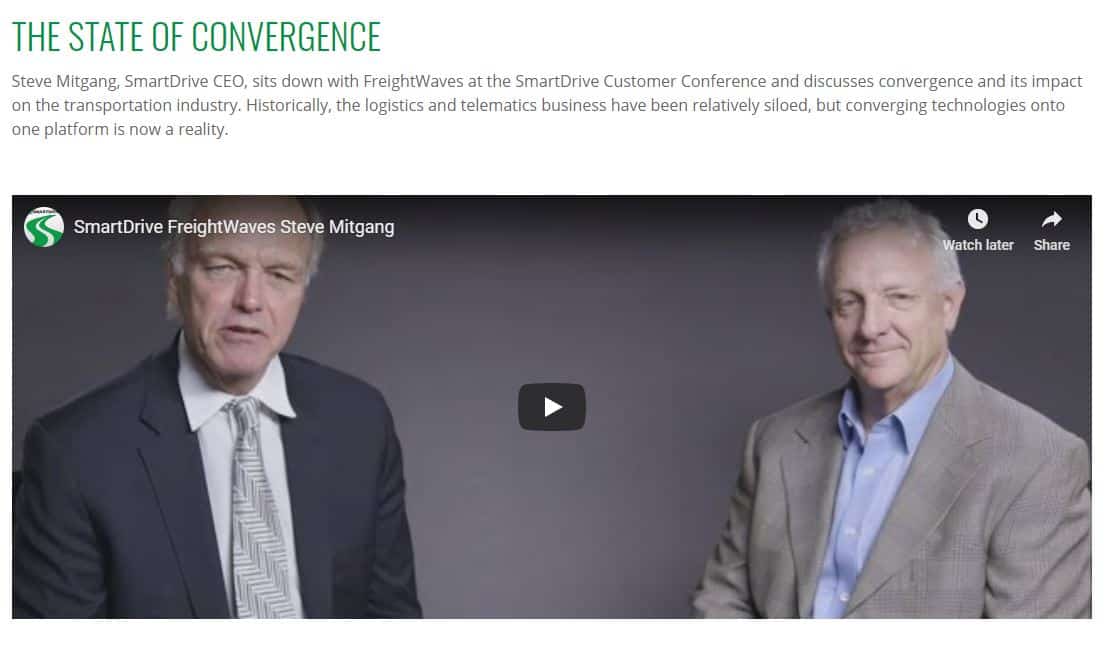
This is the first in a series of videos produced by FreightWaves and SmartDrive, recorded at the recent SmartDrive Customer Conference in Atlanta. FreightWaves editor-at-large John Kingston discussed several key issues in trucking and transport today with both SmartDrive executives and various speakers at the conference.
There isn’t going to be any room for technology silos in the cab of a truck going forward. That’s the vision of Steve Mitgang, the CEO of SmartDrive.
At the recent SmartDrive Customer Conference in Atlanta, Mitgang explained “convergence,” which in the accompanying video interview he described as “the coming together of complex technology and data and platforms.”
It’s especially significant for SmartDrive, a company primarily known for its video safety systems. It operates on its own platform but is also robust enough technologically to host other systems.
“I think the logistics and telematics business has been relatively siloed,” Mitgang said in the interview. But converging technologies onto one platform – like the one that SmartDrive’s cameras now reside – is the way around that, he said.

“We have built a platform that is highly flexible and scalable,” Mitgang said. “It is designed to basically anticipate the next 10 years of technology needs so it has enough processing and storage to enable allowing ELD [electronic logging device] providers to run applications on our box, using our engine connectivity and our mobile communications.”
While cameras have been at the core of the SmartDrive business, Mitgang said the company has been operating on a long-term assumption that ultimately, “cameras are going to be commodities.” He said, “There’s nothing special about a camera. It is what you do with the data on the back end. So our system is fully capable of having nine cameras all coming from some place, and none of them have to be ours.”
SmartDrive customers using the current platform and the analytics derived from it “are leading the industry with the best turnover, the highest miles per gallon and the lowest claims cost in the industry,” Mitgang said. “And it’s all from the data we’re providing.”










